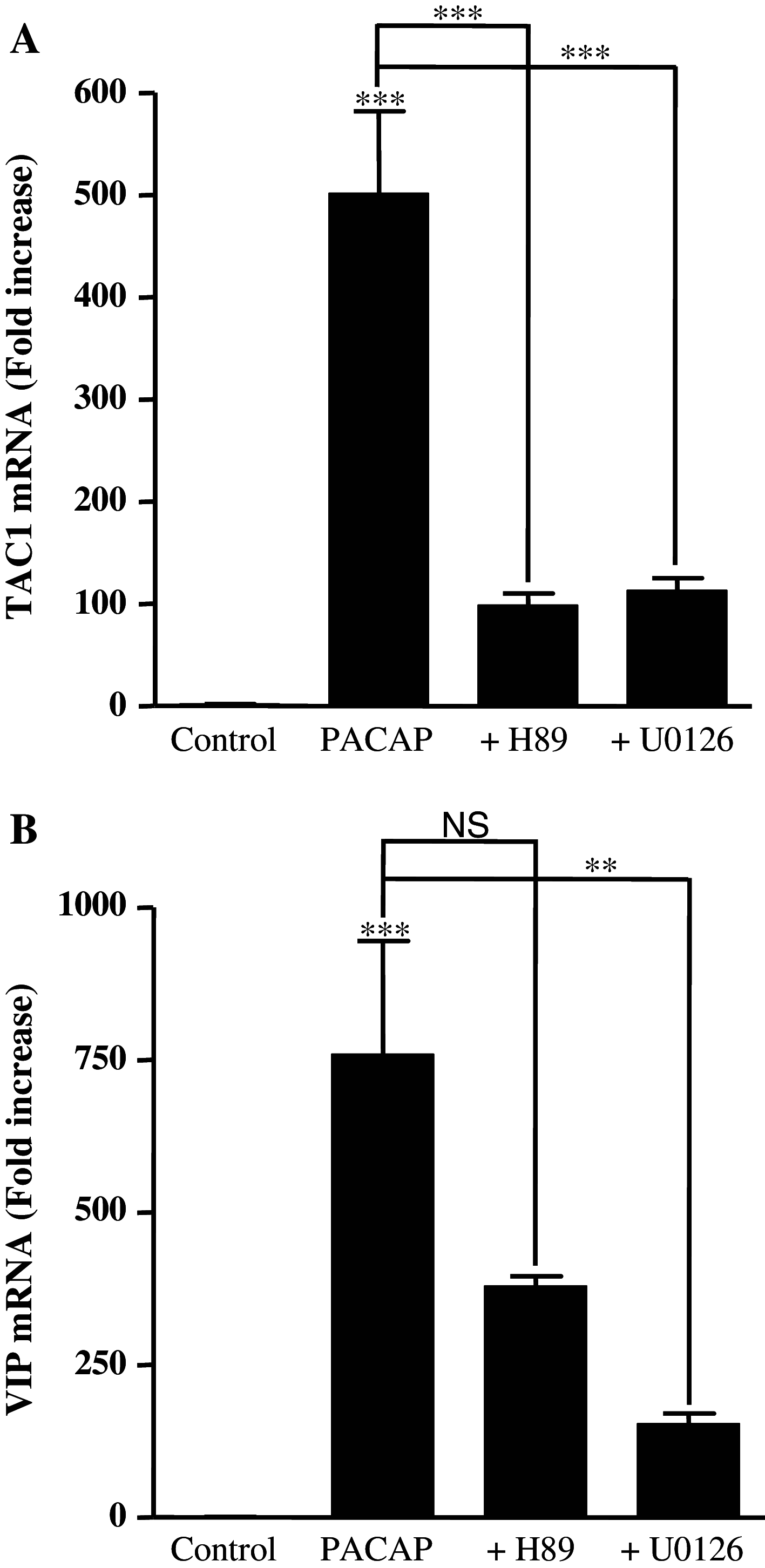Neuropeptides, growth factors, and cytokines: a cohort of informational molecules whose expression is up-regulated by the stress-associated slow transmitter PACAP in chromaffin cells
- PMID: 21107678
- PMCID: PMC4183212
- DOI: 10.1007/s10571-010-9620-y
Neuropeptides, growth factors, and cytokines: a cohort of informational molecules whose expression is up-regulated by the stress-associated slow transmitter PACAP in chromaffin cells
Abstract
Pituitary adenylate cyclase-activating polypeptide (PACAP) is a co-transmitter with acetylcholine at the adrenomedullary synapse, mediating sustained hormone secretion and regulation of cellular plasticity in response to stress at the level of gene transcription. Here we have extended our investigation of PACAP-regulated neuroendocrine cell-specific genes from PC12 cells to PC12 cells expressing physiological levels of the PAC1hop receptor found on chromaffin cells in vivo. PACAP induces in these PC12_bPAC1hop cells an additional cohort of genes, compared to PC12 cells, enriched in informational molecules including cytokines, neuropeptides, and growth factors. Using two newly developed microarray platforms for expressed bovine transcripts, we further examined PACAP-induced genes in bovine chromaffin cells during a period of exposure (6 h) corresponding to a period of prolonged metabolic or psychogenic stress in vivo during which PACAP is released from the splanchnic nerve onto chromaffin cells. As in PC12_bPAC1hop cells, PACAP induced in bovine chromaffin cells a cohort of genes encoding secretory proteins, identified by tiling for cellular localization using Ingenuity Pathway Analysis, which were highly enriched in informational molecules (secreted proteins acting at extracellular receptors). These included cytokines, growth factors and hormones, as well as converting enzymes, or protease inhibitors modulating converting enzyme function. Several neuropeptide prohormone transcripts not previously shown to be PACAP-regulated in chromaffin cells, such as thyrotropin-releasing hormone, and tachykinin precursor 1, were identified. Identification of this cohort of informational molecule-encoding transcripts suggests a wider, more integrative role for PACAP as a co-transmitter specific to stress transduction in the adrenal medulla.
Figures

References
-
- Andreis PG, Tortorella C, Ziolkowska A, Spinazzi R, Malendowicz LK, Neri G, Nussdorfer GG (2007) Evidence for a paracrine role of endogenous adrenomedullary galanin in the regulation of glucocorticoid secretion in the rat adrenal gland. Int J Mol Med 19:511–515 - PubMed
-
- Anouar Y, MacArthur L, Cohen J, Iacangelo AL, Eiden LE (1994) Identification of a TPA-responsive element mediating preferential transactivation of the galanin gene promoter in chromaffin cells. J Biol Chem 269:6823–6831 - PubMed
-
- Anouar Y, Lee HW, Eiden LE (1999) Both inducible and constitutive activator protein-1-like transcription factors are used for transcriptional activation of the galanin gene by different first and second messenger pathways. Mol Pharmacol 56:162–169 - PubMed
-
- Babinski K, Bodart V, Roy M, De Lean A, Ong H (1996) Pituitary adenylate-cyclase activating polypeptide (PACAP) evokes long-lasting secretion and de novo biosynthesis of bovine adrenal medullary neuropeptides. Neuropeptides 30:572–582 - PubMed
Publication types
MeSH terms
Substances
Grants and funding
LinkOut - more resources
Full Text Sources
Molecular Biology Databases
Research Materials

